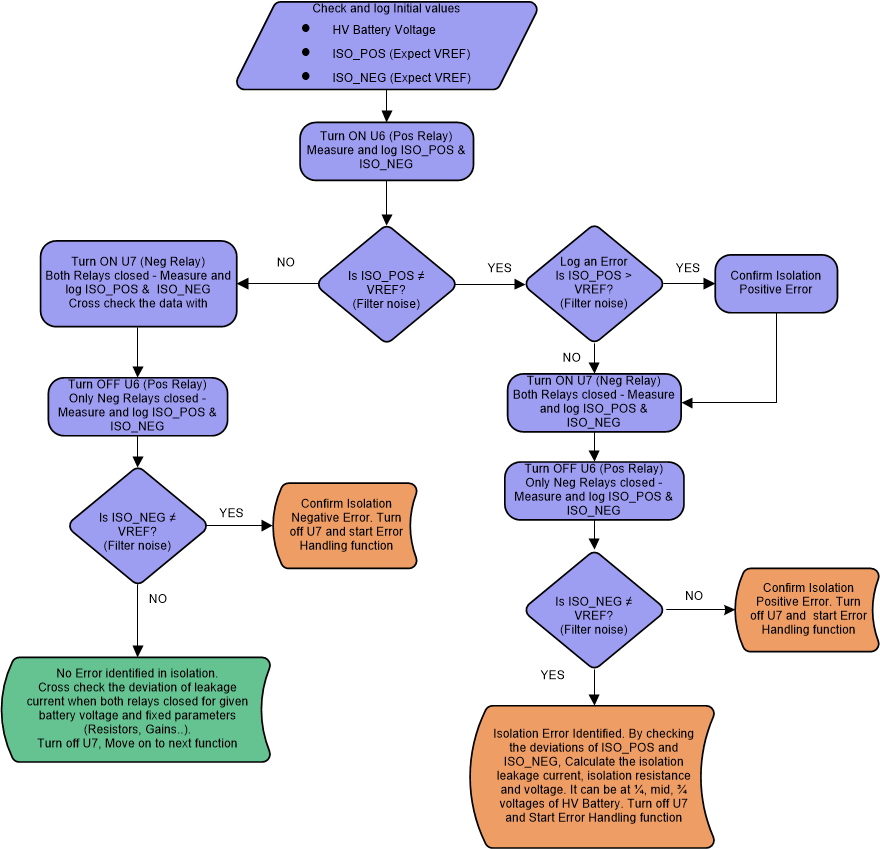TIDUDJ6B August 2022 – February 2023 OPA388-Q1
- Description
- Resources
- Features
- Applications
- 5
- 1System Description
- 2System Overview
- 3Hardware, Testing Requirements, and Test Results
- 4Design Files
- 5Software Files
- 6Related Documentation
- 7Trademarks
- 8Revision History
3.2.5 Isolation Measurement Analysis
#T5081059-41 remains true if there are no capacitors between high-voltage lines to chassis ground.
 Figure 3-36 Flow Chart of Isolation Leakage Detection
Figure 3-36 Flow Chart of Isolation Leakage DetectionBy using #T5081059-41, the designer can identify the type of isolation error in the HEV or EV system. First, identify the isolation error. To classify the severity of the error, perform an analysis to implement the prevention mechanisms. Calculating the isolation leakage current can be complex if using capacitors from high-voltage lines to the chassis ground, which is a step to improve the electromagnetic compatibility (EMC) of the system. Maintain the look-up table or equations for the expected isolation voltages and leakage currents, which change to temperature. Highly precise analog components must be used for measurement circuits to identify and analyze isolation errors.